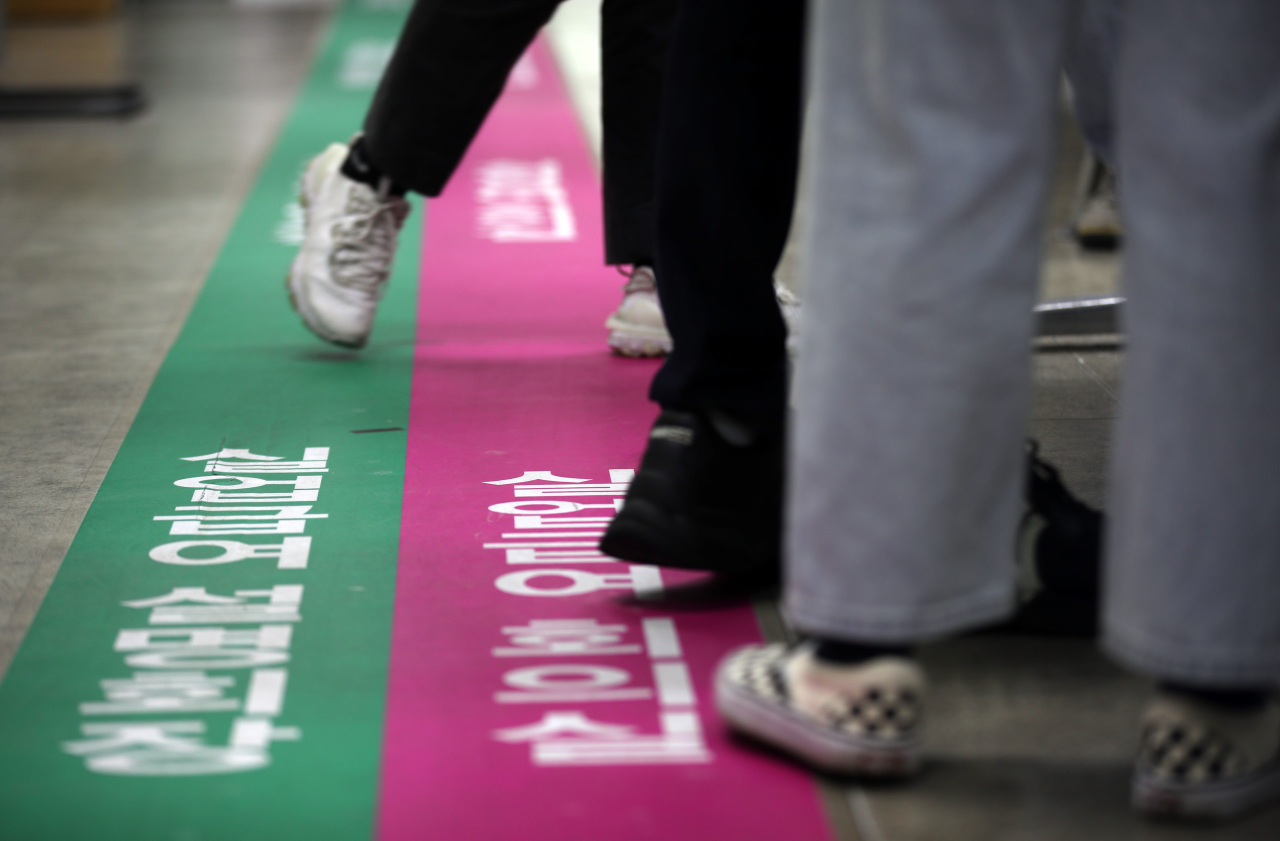Bearing the brunt of a prolonged COVID-19 fallout, South Korea saw the employment gap widen between top-tier businesses and smaller ones last year, data showed Tuesday.
The number of employed people here stood at 25.81 million in January, down 982,000 from a year earlier, according to data compiled by Statistics Korea and Korea Small Business Institute.
The steepest dip was observed in small and medium-sized businesses with less than 300 employees, where the employed population contracted by 1.1 million during the same period.
The number of SME employees has been on a constant decline ever since March last year, when the country was hit by the first nationwide coronavirus wave.
The figure, which fluctuated throughout the year depending on the epidemic situation, soared during the final two months last year -- from 343,000 in November to 736,000 in December -- and surpassed the 1 million level in January.
Taking the hardest blow were the service sectors, especially restaurant and lodging operators that faced temporary shutdowns or operating hour restrictions during the enhanced social distancing period.
Conglomerates, however, did not take the epidemic crisis as hard as the smaller-sized businesses, data showed.
The number of those employed in companies with 300 or more staff came to 2.74 million in January, up 123,000 from a year earlier. This latest figure also marked the largest on-year rise since 151,000 observed in February last year.
“SMEs could continue to face sluggish employment situations throughout February and March, due to the prolonged financial burden,” KOSBI said, urging the government for expansionary fiscal injection during the first half of the year.
Not only did the nation face a widening gap between conglomerates and SMEs, it also was weighed down by an increase in economically inactive population and deterioration in job quality, a separate set of data showed.
The Korea Economic Research Institute, a think tank affiliated with the Federation of Korean Industries, said in its report Tuesday that the country’s employment situation last year was the worst since the Asian financial crisis.
The on-year decline in the economically active population came to 174,000 in 2020, marking the largest on-year dip since the 354,000 observed in 1998.
The number of jobless people during the same period soared to 1.1 million, coming next to 1.49 million and 1.37 million observed in 1998 and 1999, respectively.
While the number of regular workers -- with 36 or more working hours per week -- slipped by 1.2 million on-year, the number of irregular workers with limited or unstable working hours increased by 554,000 during the same period.
It was then when President Moon Jae-in voiced out concerns on the country’s job market and pushed the government and public institutions to expand employment.
“(The sluggish employment situation) was to some extent inevitable due to the spread of COVID-19 and the due quarantine measures, but is a great pain in terms of the people’s livelihood,” Moon said at the Cabinet meeting held at Cheong Wa Dae.
“The central government, local governments, and public institutions will work together to create 900,000 or more direct employments by the first quarter,” the president also said, reiterating his earlier push for job market revitalization.
But some observers added that the government’s idea of adding jobs in the public sector may only have limited impact.
“The sustainable goal should be to create quality jobs in the market by alleviating excessive regulations and improving business environments,” said Choo Kwang-ho, research head at KERI.
By Bae Hyun-jung (
tellme@heraldcorp.com)








![[Today’s K-pop] Blackpink’s Jennie, Lisa invited to Coachella as solo acts](http://res.heraldm.com/phpwas/restmb_idxmake.php?idx=644&simg=/content/image/2024/11/21/20241121050099_0.jpg)